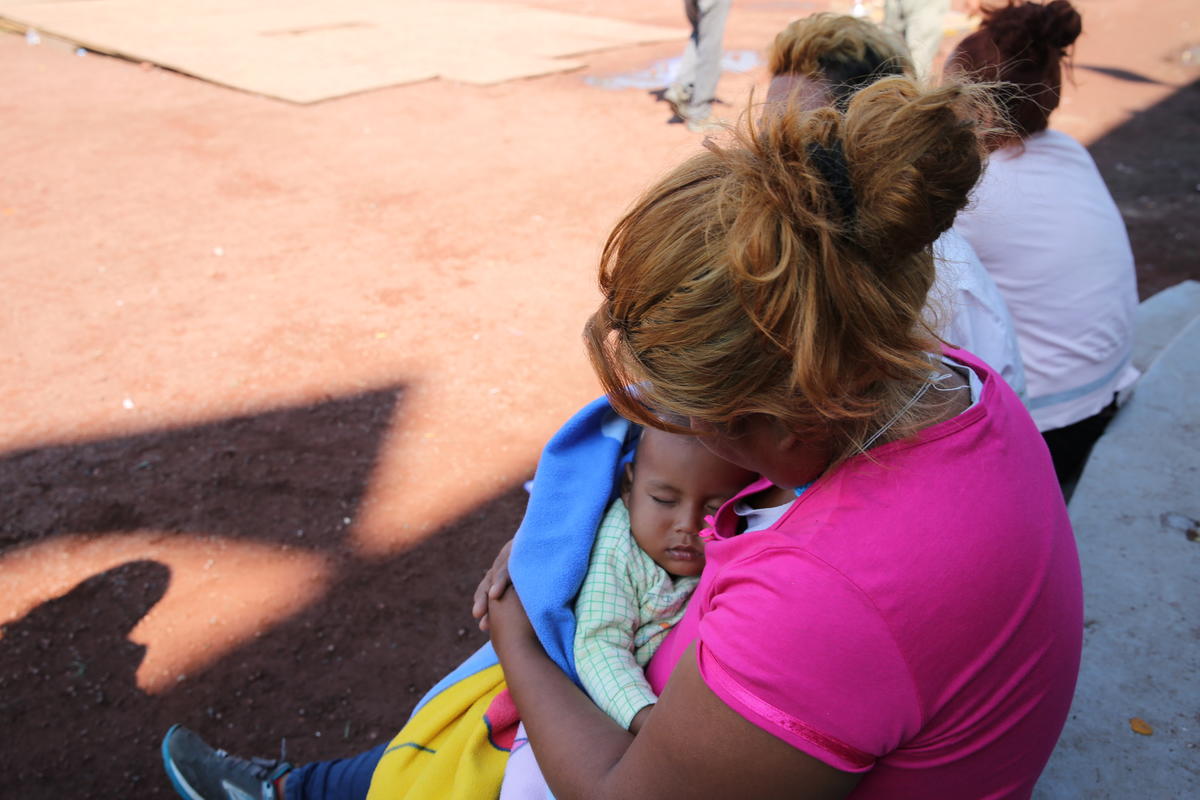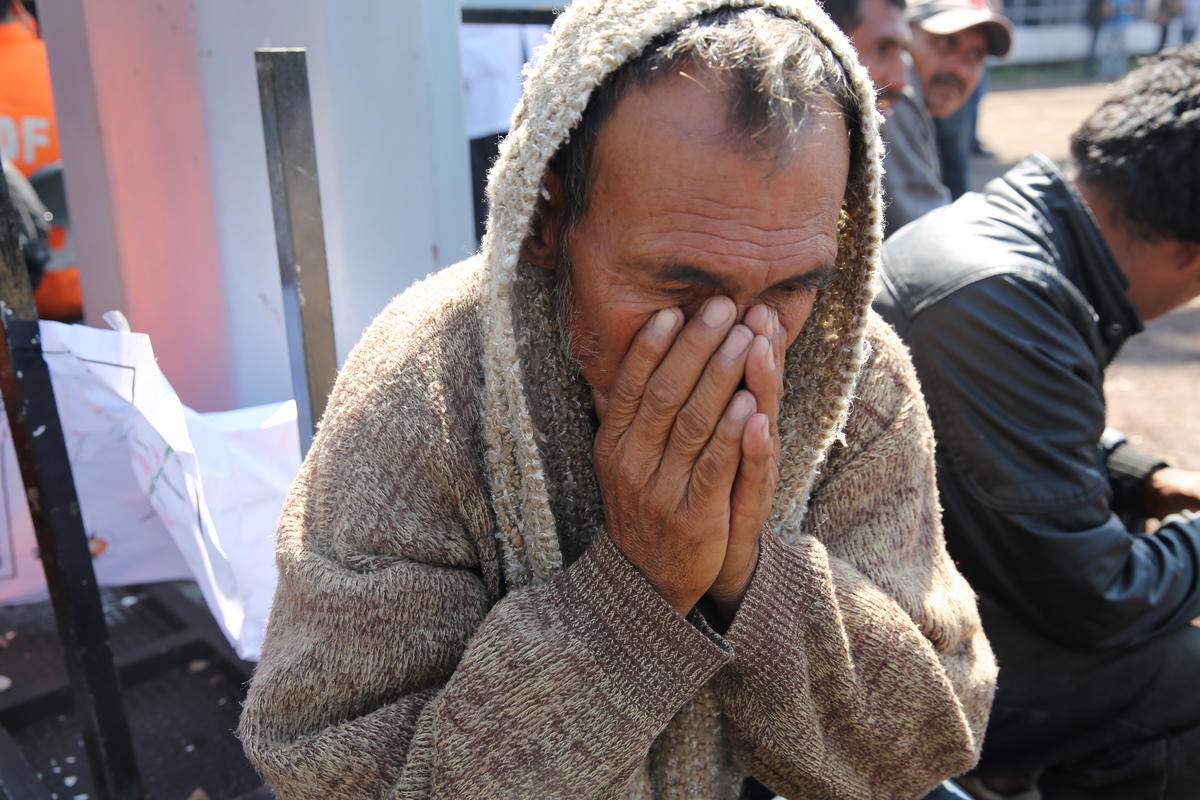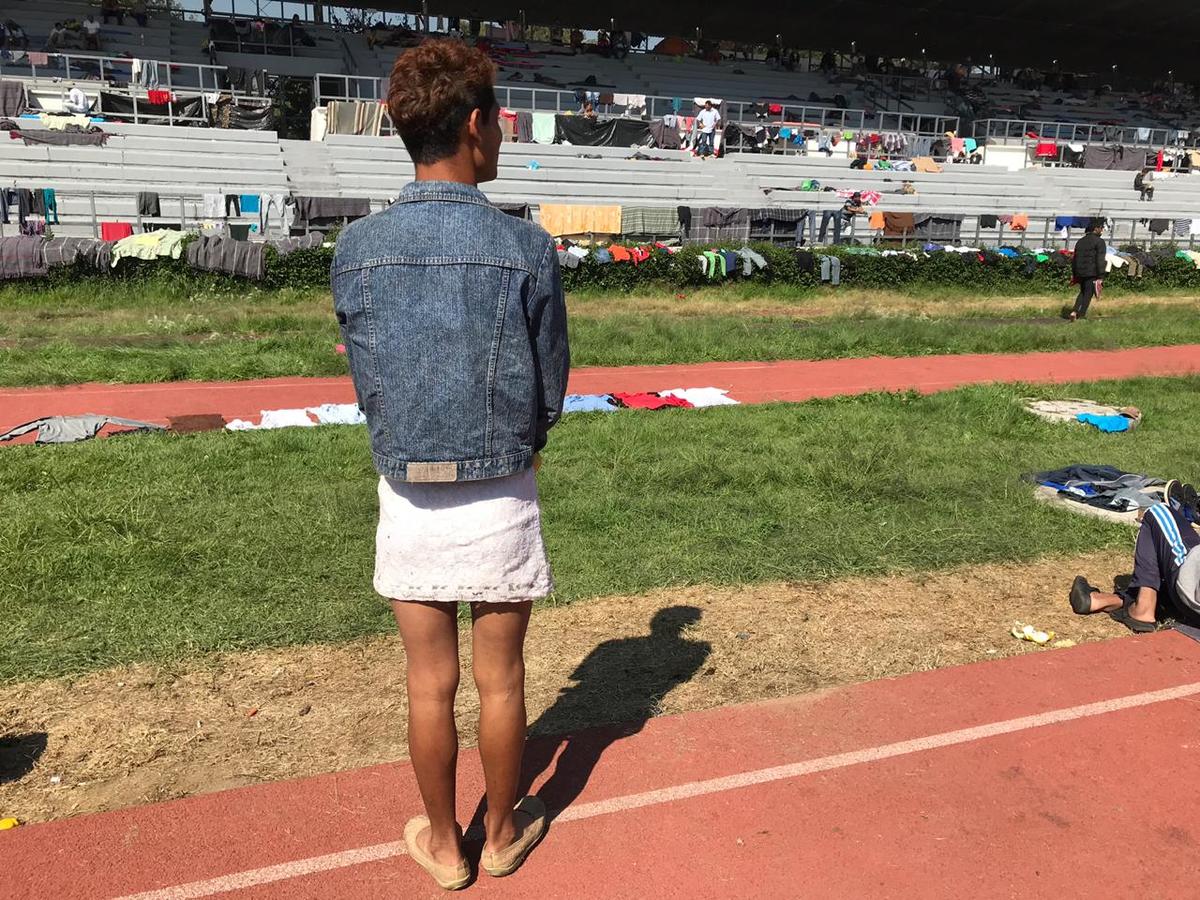Central American refugees and migrants reach Mexico City
Central American refugees and migrants reach Mexico City

MEXICO CITY – As 68-year-old Antonio* and his young nephew walked home from work in Honduras, members of a street gang cornered them and demanded an extortion tax. Unable to pay, they shot and killed Antonio’s nephew in front of him.
Gathering up a few belongings, Antonio joined refugees and migrants making their way on foot and hitch-hiking north through Mexico in search of safety. The trek is not easy for an elderly man like Antonio. He had to sleep outdoors, in low temperatures, and he fell ill along the way.
“This walk is not a red carpet, but a carpet full of thorns,” he says, covering his head with a thick scarf. “I am old and sick. I have blisters."
He is among more than 4,700 refugees and migrants in a so-called “human caravan” who have reached Mexico City after 26 days on the road. They have been provided with a place to bed down rest at Jesús Martínez "Palillo" stadium, in the east of the Mexican capital.
Three massive white plastic tents have been set up to accommodate the exhausted men, women and children who have made the gruelling trek. The stadium grass is now covered in blankets and backpacks. Drying clothes hang from fences and the grandstand has turned into bunkbeds.
Driven by desperation – violence, persecution, death threats, sexual abuse, lack of food and jobs – some 500 people left San Pedro Sula, Honduras, on foot on 12 October. As the procession headed north, crossing Guatemala then entering southern Mexico, thousands of Hondurans, Guatemalans and Salvadorans joined the caravan, which at one point reached more than 7,000 people.
“They were threatening me all the time – on the street, in shops, everywhere."
The roughly 1,600 kilometres between San Pedro Sula and Mexico City have taken a toll on those in the caravan, which at various points fragmented into smaller groups. People walked for hours under the sun, often in flip flops, carrying children, dragging baby strollers, often with little to drink or to eat.
Mitzy perches on the concrete steps at the stadium, clasping her one-year-old baby in her arms, trying to recover from the exhausting journey. Luis, her baby, suffered from dehydration and was hospitalized twice. “Under the sun, your skin gets burnt and you get bad headaches,” she explains.
The tipping point that drove Mitzy to flee Honduras with her whole family – her husband and three children – came when a street gang demanded that her 14-year-old daughter become the girlfriend of one of its members. If they did not comply, they would kill Mitzy.
“They were threatening me all the time -- on the street, in shops, everywhere,” Mitzy says. “They knew everything about our movements, our work schedule, when we were going to church.”
Her husband Miguel, a construction worker, was also threatened by the gang, who demanded a so-called “war tax”. Earning just US$8 per day, he found it impossible to meet the gang’s demands.
“Many times I was walking on the street, coming back from work, and these bad people would stop me, strip me of my clothes and leave me completely naked,” he says.
UNHCR, the UN Refugee Agency, has in recent years supported a growing number of people from the north of Central America seeking asylum in Mexico. In recent weeks, it has had to step up its response to meet the surge in the numbers of people fleeing violence at home and seeking protection there.
“When I was walking on the street, they would throw garbage at me."
“The numbers are much larger than the asylum system and existing shelters are equipped for, so we have had to quickly boost response capacity, including to address risks for families, unaccompanied children and others at risk," says Mark Manly, UNHCR’s representative in Mexico.
With support from UNHCR, the Mexican government has registered more than 3,264 asylum requests so far. The UN Refugee Agency and its NGO partners have an outreach team at the Palillo stadium to identify people who wish to make an asylum claim in Mexico City and to provide them with legal advice.
Those who lodge claims are referred to the Mexican Refugee Commission, and are moved to shelters in the sprawling Mexican capital where specialized services are available, including counselling and integration support.
In response to a request from the Mexican government, UNHCR has doubled the size of its team in Tapachula, in the southern state of Chiapas bordering Guatemala, to more than 45, including emergency shelter and registration specialists. Staff and legal aid partners have provided information on the Mexican asylum system to more than 4,000 people in several other caravans heading north over the border.
To bolster capacity to process the asylum claims, UNHCR has provided Mexico’s Refugee Commission with a further 25 contract staff. It is working with civil protection and municipal authorities to increase shelter capacity, adding more than 400 beds in Tapachula alone. Protection teams are on hand in the shelters to cater for needs of families, unaccompanied children and others at particular risk, including lesbian, gay, bisexual, transgender and intersex people, collectively known as LGBTI.
Lili, a 22-year-old transsexual woman, did not feel safe in Honduras, where she was bullied and excluded from her community.
“When I was walking on the street, they would throw garbage at me,” she says. “That’s why I fled my country. I want a better future, to have a job and to be able to help my family back in Honduras.”
“The numbers are much larger than the asylum system and existing shelters are equipped for."
She joined the caravan because she felt it was a safer way to travel. As she pauses to rest at the stadium, she says she is considering asking for asylum in Mexico. “I have thought about asking for support, because I came alone. I really do need to ask for protection.”
Mexico has been very welcoming, Lili says. People have offered them food, clothes, drinking water. “I have not been discriminated at all,” she says. “I feel more free here than in my country.”
Among the more vulnerable during the weeks-long trek in search of safety is Nancy, who is eight months pregnant. Lying on a thin mattress on the floor of one of the large tents, she hugs her three-year-old child against her protruding belly.
Nancy has another daughter, who is six, back in Honduras. The girl is staying with her grandmother. “I did not want her to miss school,” she says. They are trying to reach the United States, where Nancy’s brother lives.
“Some parts of the journey were very hard for me,” Nancy says. “Carrying my baby under such high temperature during the day, and being cold at night.”
The number of Central American refugees and migrants reaching Mexico City is growing every day. Another two smaller caravans from Central America, with about 3,000 people in total, recently entered Mexico’s southern border and are heading north.
* Refugee names have been changed for protection reasons.












